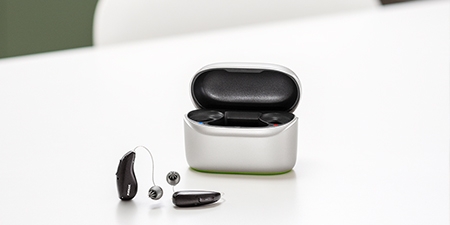Hearing Aid and Hearing Loss Terminology Explained

Hearing Aid and Hearing Loss Terminology Explained
15 min
Published June 26, 2025
It is difficult enough to suffer from hearing loss, but finding the best hearing aids to meet your needs can be downright overwhelming. Which hearing aids are the best? What features should you look for in a hearing device? If you are on the market for hearing aids or simply want to know more about hearing loss, studying the topic and learning the terminology can be extremely valuable.
Before beginning your search for the "perfect" hearing aids, why not familiarize yourself with the key terms used to describe common types of hearing loss, devices, technologies, and accessories? Putting in the work upfront will help you filter through an abundance of information and allow you to make the best possible decision.
Below is a list of the most important hearing loss and hearing aid-related terminology we put together to guide you in your decision-making process.
Hearing loss-related terminology
Hearing impairment does not affect everyone the same way. Depending on the degree of impairment, treatment could vary significantly. That is why it is essential to differentiate between mild, moderate, severe, and profound hearing loss.
Hearing aids terminology
The five basic styles of hearing aids are behind-the-ear (BTE), in-the-ear (ITE), and canal hearing aids, receiver-in-canal (RIC) or receiver-in-the-ear (RITE) and open-fit devices. While all five types are small and discrete, some people prefer one over the others.
Other key terms
We’re here to help
If you are unsure which features you need, contact us and let one of our audiologists guide you.




